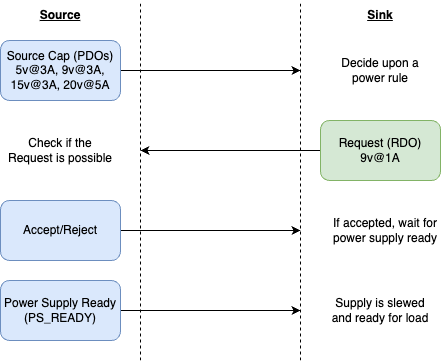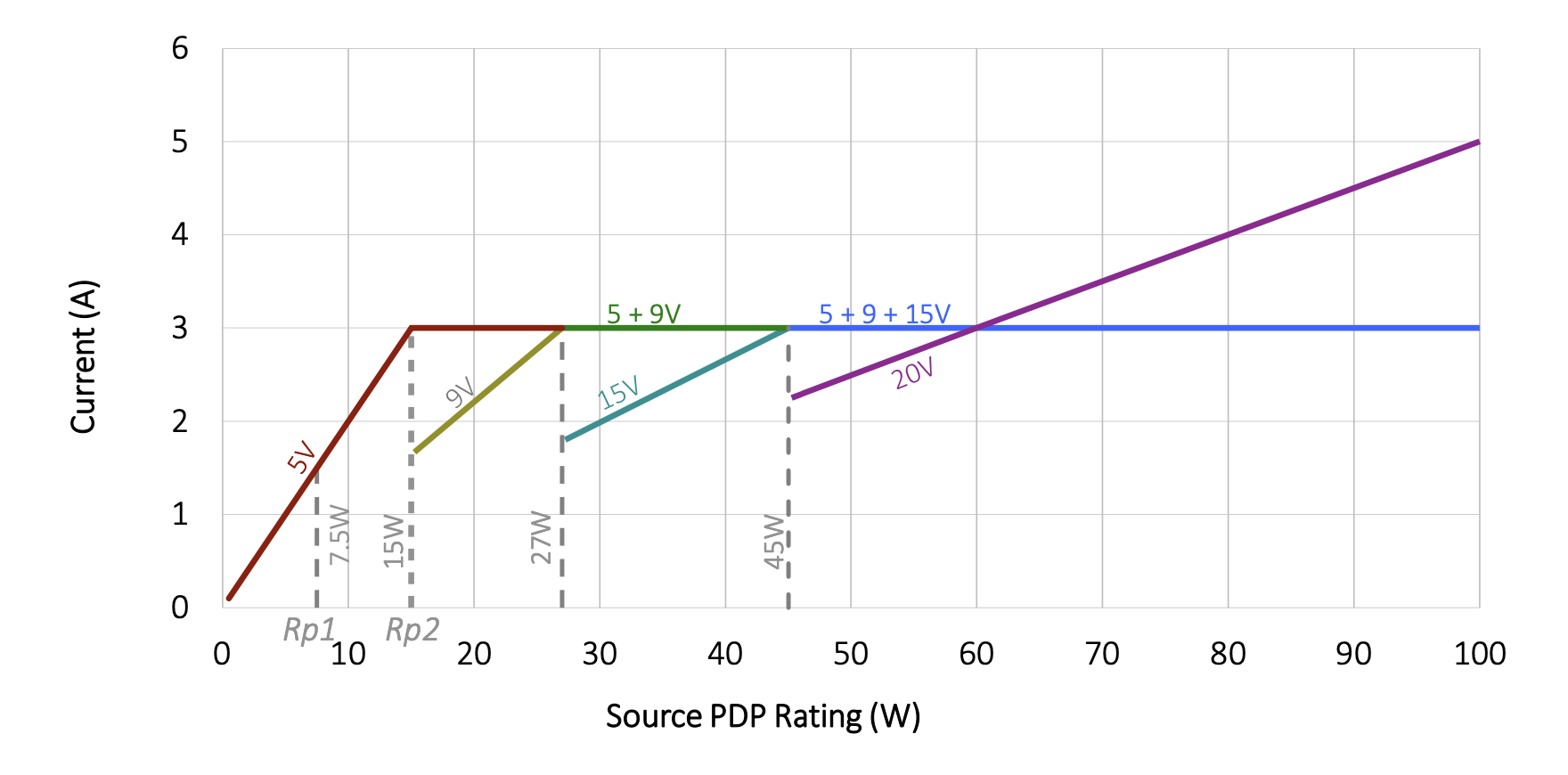Discover the Power of USB-C
USB Power Delivery (USB PD) is a crucial aspect of USB-C technology, allowing for faster charging and increased power delivery capabilities of up to 240 Watts! If you haven't checked out our blog on The USB-C Connection Statemachine, we recommend reading that first. When a USB-C connection is in an attached state, USB PD negotiation occurs between the source and sink devices, allowing for the negotiation of power delivery modes and values. This blog post will explore how the most basic USB PD negotiations work, including multiple power delivery objects (PDOs), and the importance of augmented power data objects (APDOs) for high-speed battery charging.
How devices request 9V or 20V from the same charger
When a USB-C connection is in an attached state, the source device first identifies the capabilities of the USB-C cable before sending a source capabilities message to the sink containing PDOs. The PDOs have different voltage and current values, allowing for flexibility in charging devices. For example, a phone may only accept up to 9 Volts at 3 Amps. However, the latest and greatest laptops can take up to 20 Volts at 5 Amps. Having a variety of PDOs allows each device to pick something inside its electrical capabilities but does not restrict the charger from supporting both devices. If the sink device is capable of USB PD, it will respond to the source capabilities message with a request data object (RDO). The RDO specifies a PDO index and includes additional information about the requested voltage and/or current. The source then responds with an accept or reject message. If accepted, the source changes the supplied voltage and current before sending back a power supply ready message (PS Ready). PS Ready signals that the sink can draw the requested power level specified in the RDO.

Figure 1: Basic Power Negotiation
The Details of Basic Power Data Objects
Power Data Objects (PDO) come in three varieties, fixed, variable, or battery. Fixed PDOs are for a pre-defined fixed voltage with a maximum current value. The legacy 5v output of a USB port falls into fixed PDOs along with 9v, 12v (deprecated), 15v, and 20v. Fixed PDOs are the most common and widely used PDOs out there. Variable PDOs are for power supplies that swing in voltage between an advertised minimum and maximum with a maximum current value. Battery PDOs are for direct connections with a battery and specify minimum and maximum voltage with maximum power. These types are in the original USB Power Delivery specification and increased the power in a USB port from the previous 15W with USB-C to a whooping 100W.

Figure 2: Fixed Rule Power Curves
Augmented Power Data Objects
Augmented Power Data Objects (APDO) is an extension of the original power delivery objects used in USB PD. APDOs expose additional power delivery objects such as Standard Power Range Programmable Power Supply (SPR) and Extended Power Range Adjustable Voltage Supply (EPR). SPR covers a voltage range from 3.3 to 21 volts while EPR covers a voltage from 15 to 48 volts. These modes allow for fine control over the charging process, including setting different voltage and current values throughout charging. Another addition is allowing the sink to draw the power supply into constant current mode at the RDO current setpoint allowing for constant current charging of a battery directly. The basic PDOs (fixed, variable, or battery) only allow for the setting of one variable, current or power. However, with the added flexibility, APDOs do come with additional overhead. They require a keep-alive message sent periodically to maintain the connection, which ensures the requested voltage/current is accurate. Also, EPR has a unique entrance routine to prevent the overvoltage of older devices. Where APDOs really shine is high-speed battery charging, such as Samsung's Super Fast Charging technology. This technology uses APDOs to provide a guaranteed 25 Watts with up to 45 Watts for compatible devices. The precise voltage and current control ensures the battery is charged quickly and efficiently without overheating or damaging the device. With the ability to remain in constant current and specify exactly two times the battery voltage, devices can utilize extremely efficient charging techniques (peak efficiency >99%) such as capacitive voltage halving.
Conclusion: USB Power Delivery Negotiation in USB-C Technology
USB power delivery negotiation is a crucial piece of USB-C technology, allowing for faster charging and increased power capability. With multiple power delivery objects and augmented power data objects, USB PD negotiations can provide fine control over the charging process and the right voltage for each device. Ensuring devices are charged quickly and efficiently without overheating or damaging the battery. To get a hands-on look at USB PD in action, check out Acroname's USBHub3c and USB-C Switch.
REFERENCES
USB Power Delivery Specification R3.1 V1.7, USB-IF, (https://www.usb.org/sites/default/files/USB%20PD%20R3.1%20V1.7_0.zip)
Add New Comment